Back in 2019, ranitidine was one of the most common pills people took for heartburn and gastritis. You could buy it over the counter, and doctors prescribed it by the millions. But today, if you search for ranitidine on a pharmacy shelf, you won’t find it. Not in the UK, not in the US, not in most countries. Why? Because it was pulled from the market. And if you’re reading this because you’re still dealing with gastritis pain, you need to know what happened - and what to do now.
What Ranitidine Actually Did for Gastritis
Gastritis means your stomach lining is inflamed. That can come from too much acid, H. pylori bacteria, stress, or long-term use of NSAIDs like ibuprofen. Ranitidine, sold under brand names like Zantac, worked by blocking histamine-2 (H2) receptors in your stomach. Less histamine meant less acid production. That gave your stomach lining time to heal.
For many people, it worked. A 2017 study in the Journal of Gastroenterology showed that ranitidine reduced stomach acid by 70% within two hours of taking a 150 mg dose. People reported less burning, less nausea, and better sleep. It wasn’t a cure, but it was a reliable way to manage symptoms - until it wasn’t.
Why Ranitidine Was Taken Off the Market
In April 2020, the FDA announced a full recall of all ranitidine products. The reason? NDMA - N-nitrosodimethylamine. It’s a known carcinogen. Tests found that ranitidine could break down over time, especially when stored at higher temperatures, and produce dangerous levels of NDMA. The levels weren’t just slightly above safety limits - they were 10 to 100 times higher than what’s considered safe for daily exposure.
The UK’s MHRA followed suit. By June 2020, all ranitidine products were withdrawn from sale. This wasn’t a slow, quiet removal. Pharmacies had to pull it off shelves. Prescriptions were canceled. Patients were called in for alternatives.
Here’s the thing: if you were taking ranitidine for gastritis and stopped suddenly, you didn’t just lose a medication - you lost your symptom control. Many people went back to suffering. That’s why understanding your options now matters more than ever.
What to Use Instead of Ranitidine for Gastritis
There are three main classes of drugs that work for gastritis today: proton pump inhibitors (PPIs), H2 blockers that are safe, and antacids.
- Proton Pump Inhibitors (PPIs) like omeprazole, esomeprazole, and lansoprazole are now the first-line treatment. They block acid production at the source - the proton pumps in stomach cells. They’re stronger than ranitidine and work longer. Omeprazole 20 mg daily reduces acid for up to 24 hours. Studies show PPIs heal gastritis in 80% of cases within four weeks.
- Safe H2 Blockers like famotidine (Pepcid) and nizatidine are still available. They work like ranitidine but don’t break down into NDMA. Famotidine is especially popular because it’s affordable and effective. A 20 mg dose works for 10-12 hours and is often used for nighttime relief.
- Antacids like Gaviscon or Maalox give quick, short-term relief by neutralizing acid. They don’t heal the lining, but they can stop the burning fast - useful for sudden flare-ups.
Most doctors will start you on a PPI like omeprazole for 4-8 weeks. If symptoms improve, they might step you down to an H2 blocker like famotidine for maintenance. It’s not the same as ranitidine, but it’s safer and just as effective.
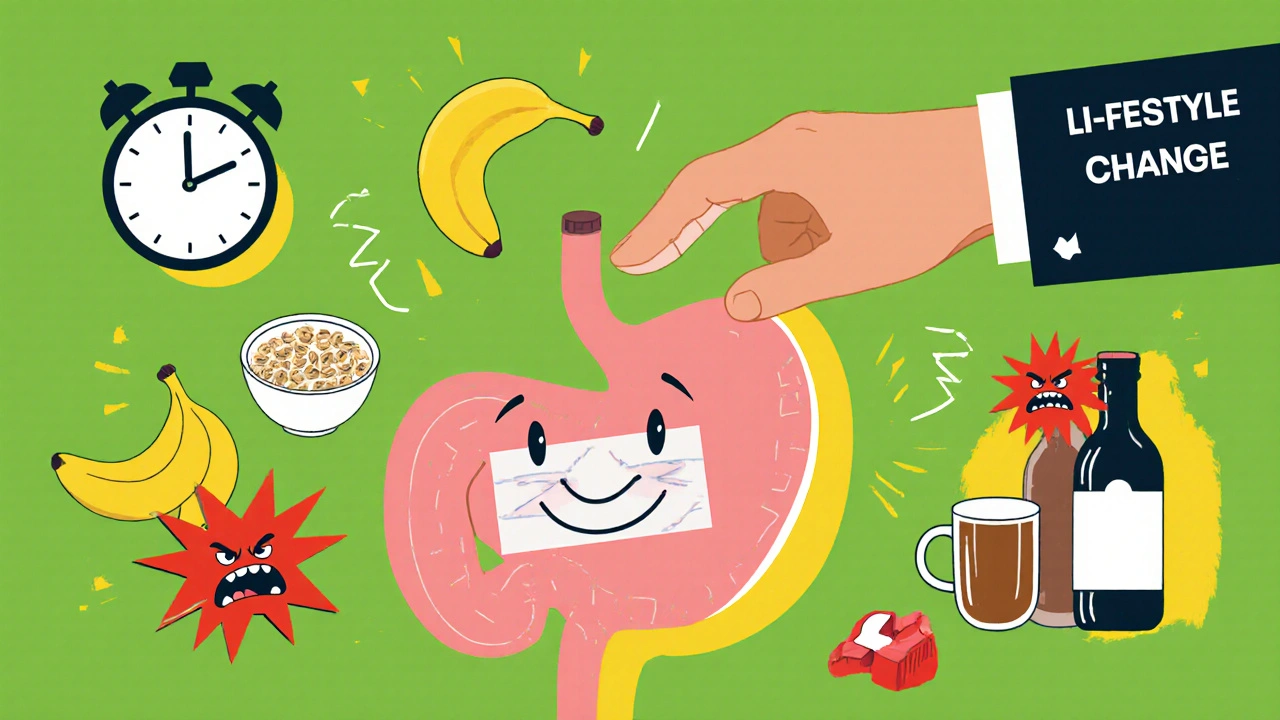
When to See a Doctor - Not Just Pop Pills
Many people assume gastritis is just ‘bad digestion’ and treat it like a cold. But persistent inflammation can lead to ulcers, bleeding, or even increase your risk of stomach cancer - especially if H. pylori is involved.
If you’ve had symptoms for more than two weeks, or if you notice:
- Black, tarry stools
- Vomiting blood or material that looks like coffee grounds
- Unexplained weight loss
- Difficulty swallowing
- you need a doctor. A simple breath or stool test can check for H. pylori. If it’s positive, you’ll get a 10-14 day course of two antibiotics plus a PPI. This clears the infection and cures the gastritis in over 90% of cases.
Don’t self-treat long-term with PPIs or H2 blockers without medical guidance. Long-term use can lead to nutrient deficiencies (like B12 and magnesium), bone loss, or increased risk of gut infections. Your doctor should monitor you.
Lifestyle Changes That Actually Help
Medication helps, but if you don’t change what you’re eating and how you live, the inflammation will come back.
- Avoid alcohol and smoking. Both irritate the stomach lining and reduce healing.
- Stop NSAIDs. If you take ibuprofen or naproxen daily for pain, talk to your doctor about alternatives like paracetamol or physical therapy.
- Eat smaller meals. Large meals stretch the stomach and trigger more acid. Try five small meals instead of three big ones.
- Don’t lie down after eating. Wait at least three hours. Gravity helps keep acid where it belongs.
- Reduce stress. Chronic stress increases stomach acid and weakens your gut’s natural defenses. Even 10 minutes of daily breathing exercises can help.
One patient I spoke with in Birmingham - a 58-year-old teacher - had gastritis for five years. She took ranitidine daily. After it was pulled, she tried omeprazole and cut out coffee and late-night snacks. Within six weeks, her symptoms vanished. She didn’t need pills anymore.
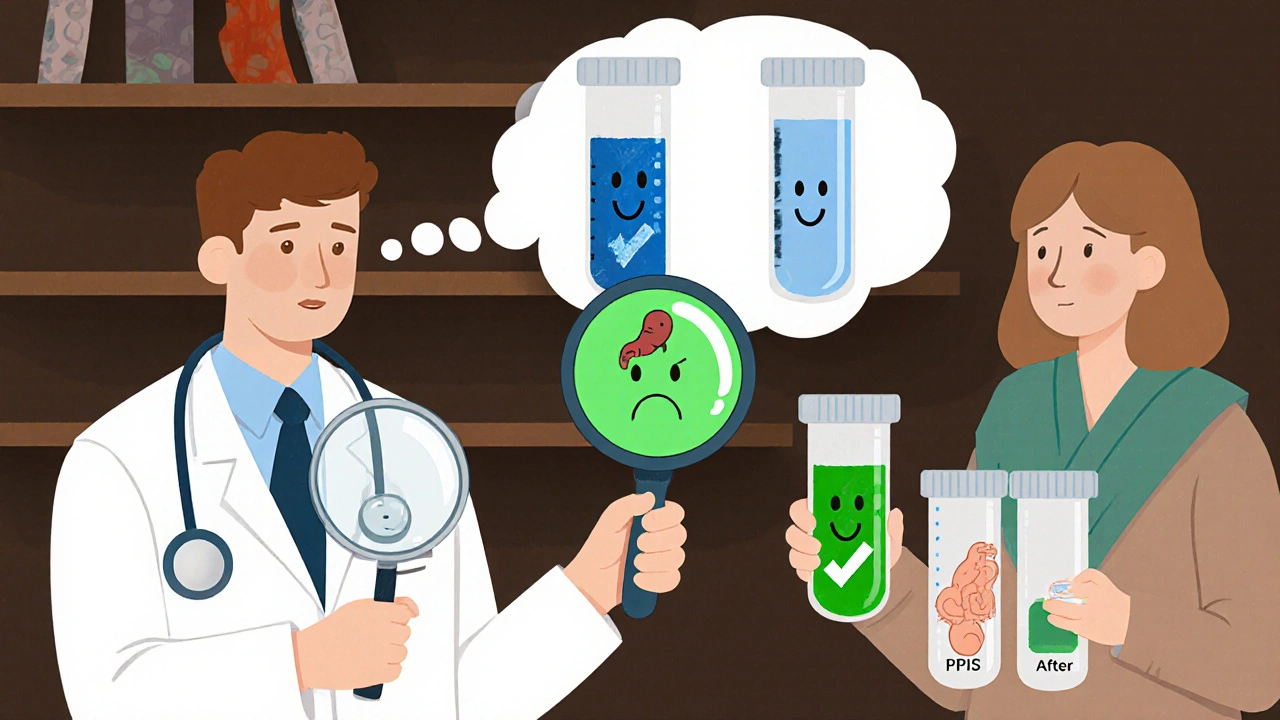
What About Natural Remedies?
You’ll see claims about aloe vera, licorice root, or cabbage juice curing gastritis. Some studies show mild symptom relief, but none prove they heal the stomach lining like PPIs or H. pylori treatment does.
Herbal supplements aren’t regulated. A 2023 review in the British Journal of Clinical Pharmacology found that many ‘natural’ stomach remedies contained undeclared pharmaceuticals - including PPIs and H2 blockers - at unsafe doses. That’s not healing. That’s accidental overdose.
If you want to try something natural, stick to proven basics: chamomile tea for calming, ginger for nausea, and probiotics from yogurt or kefir to support gut balance. But don’t replace medicine with tea.
How to Get Help Today
If you’re still using ranitidine - stop. Throw it away. Don’t flush it; take it to a pharmacy for safe disposal.
If you’re struggling with gastritis symptoms now:
- See your GP or pharmacist. Ask for a prescription for omeprazole or famotidine.
- Ask to be tested for H. pylori.
- Start tracking your symptoms: what you eat, when you feel pain, how you sleep.
- Give the new treatment 2-4 weeks. Don’t give up too soon.
Most people find relief. It just takes the right plan - not the old one.
Is ranitidine still safe to take if I found it in an old medicine cabinet?
No. Even if it’s unopened, ranitidine can break down over time and produce harmful levels of NDMA, a cancer-causing chemical. The FDA and MHRA advise against using it under any circumstances. Take it to a pharmacy for safe disposal.
What’s the best alternative to ranitidine for gastritis?
Omeprazole is the most commonly prescribed alternative. It’s a proton pump inhibitor that reduces stomach acid more effectively than ranitidine. For maintenance, famotidine (Pepcid) is a safe H2 blocker that doesn’t carry the same risks. Always consult your doctor before switching.
Can gastritis go away on its own without medication?
Mild gastritis caused by short-term triggers like alcohol or stress may improve with lifestyle changes alone. But if it’s caused by H. pylori, long-term NSAID use, or chronic acid exposure, it won’t heal without treatment. Left untreated, it can lead to ulcers or increase cancer risk.
How long does it take for PPIs like omeprazole to work for gastritis?
You may feel less burning within 24-48 hours, but full healing of the stomach lining usually takes 4-8 weeks of daily use. Don’t stop taking it just because symptoms improve. Complete the full course as prescribed.
Can I take antacids with PPIs or H2 blockers?
Yes, antacids like Gaviscon can be used alongside PPIs or H2 blockers for quick, short-term relief of sudden burning. But don’t rely on them long-term. They don’t heal the lining - they just mask the pain. Use them only as needed.

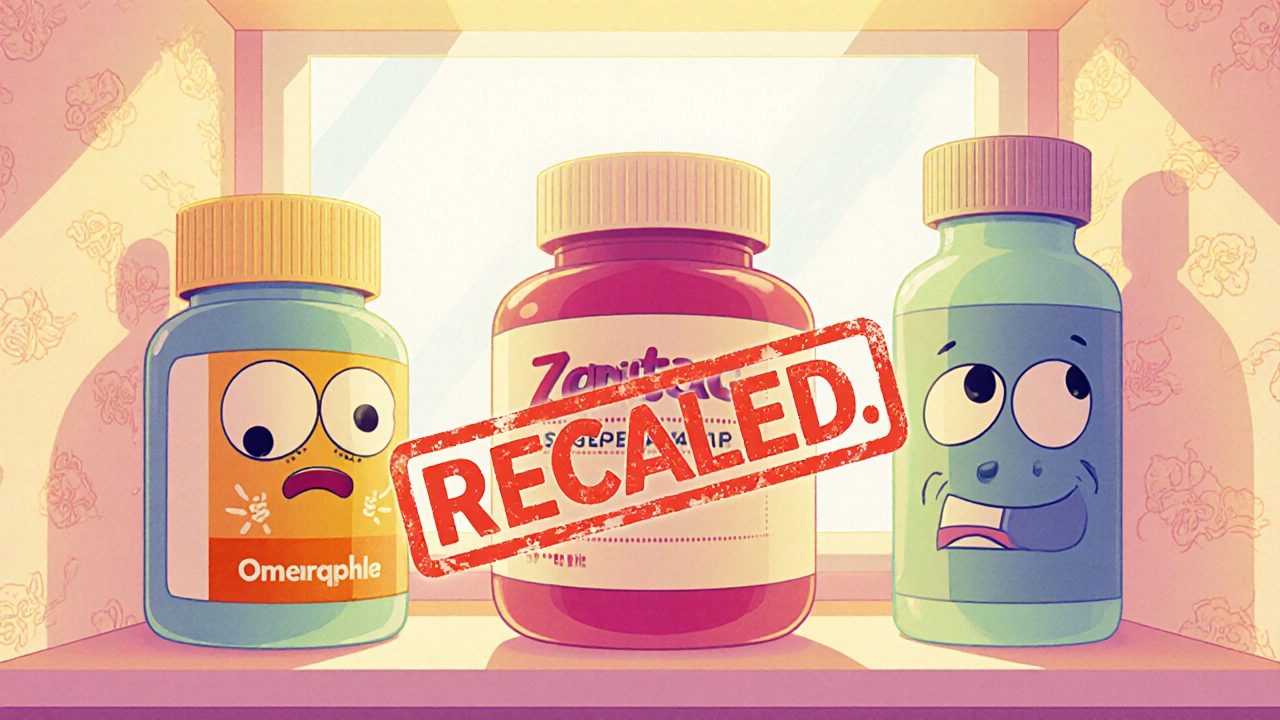
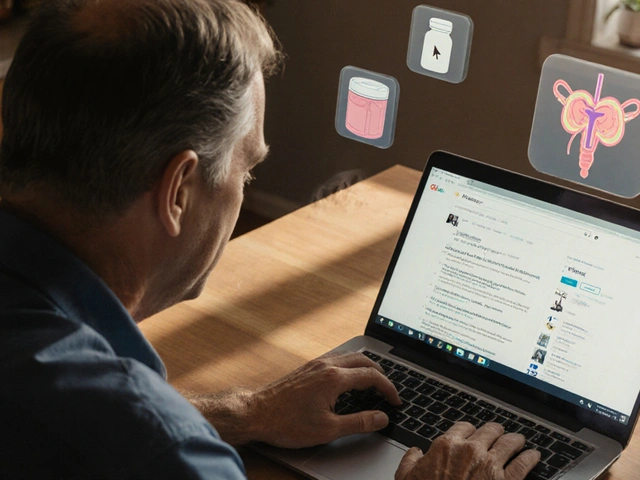
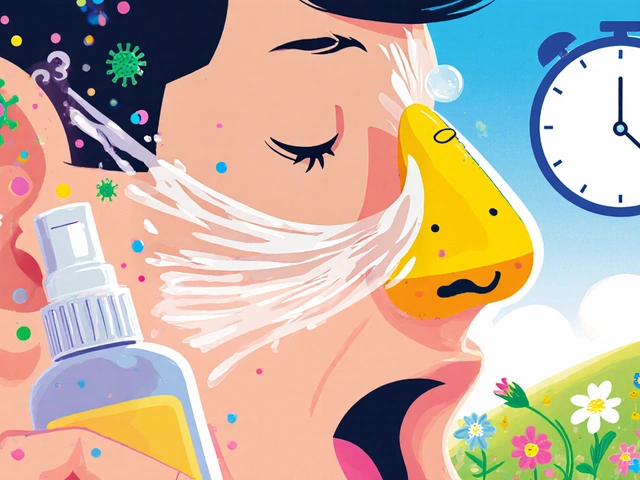
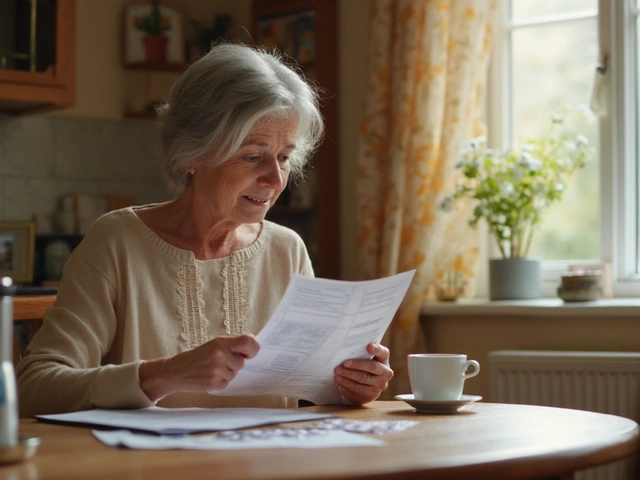
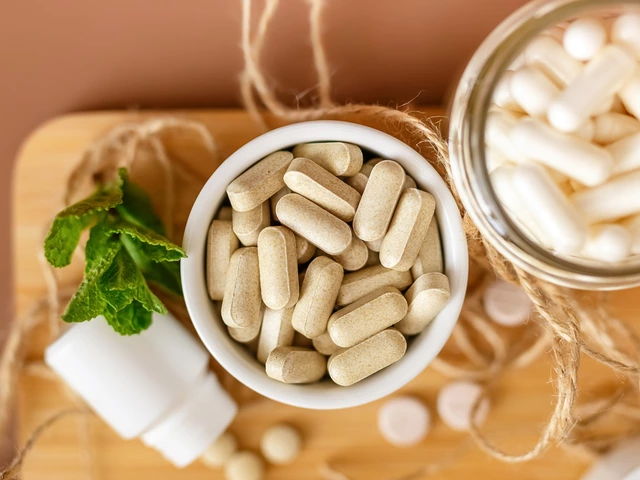
Mamadou Seck
October 31, 2025 AT 01:50Anthony Griek
November 1, 2025 AT 16:56Norman Rexford
November 2, 2025 AT 07:40Wayne Keller
November 3, 2025 AT 07:33Shana Labed
November 4, 2025 AT 03:39California Daughter
November 4, 2025 AT 09:30Vishwajeet Gade
November 4, 2025 AT 17:05Casey Crowell
November 6, 2025 AT 16:29Shanna Talley
November 8, 2025 AT 13:57Gina Damiano
November 9, 2025 AT 21:13